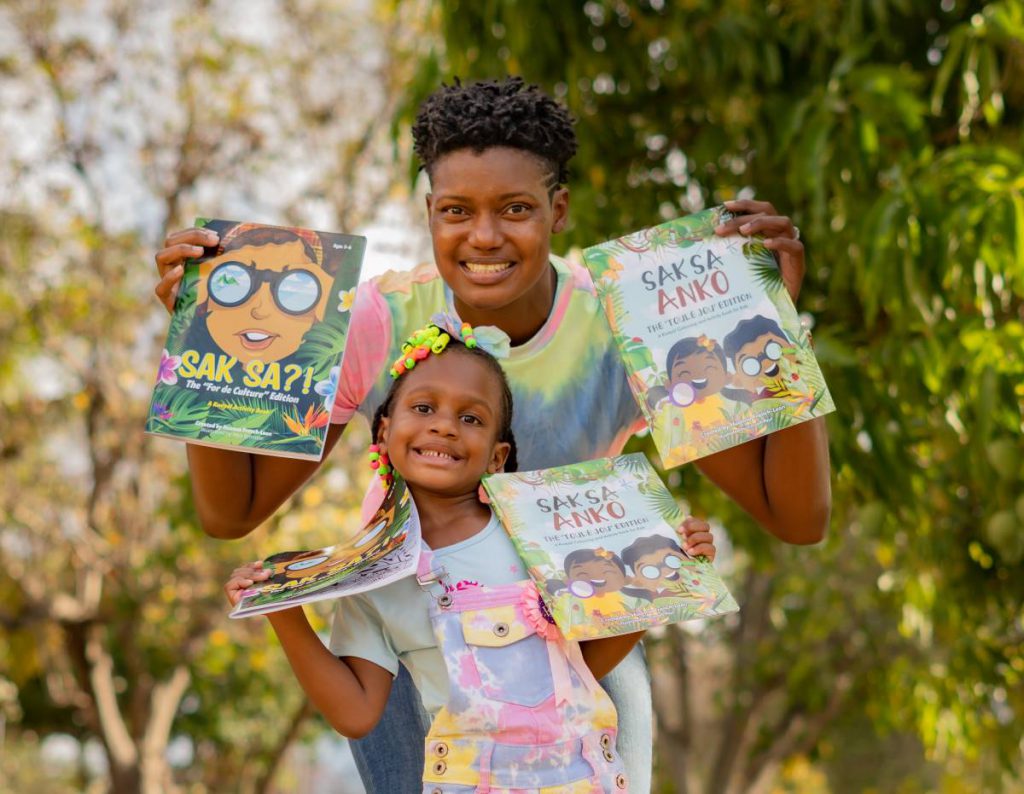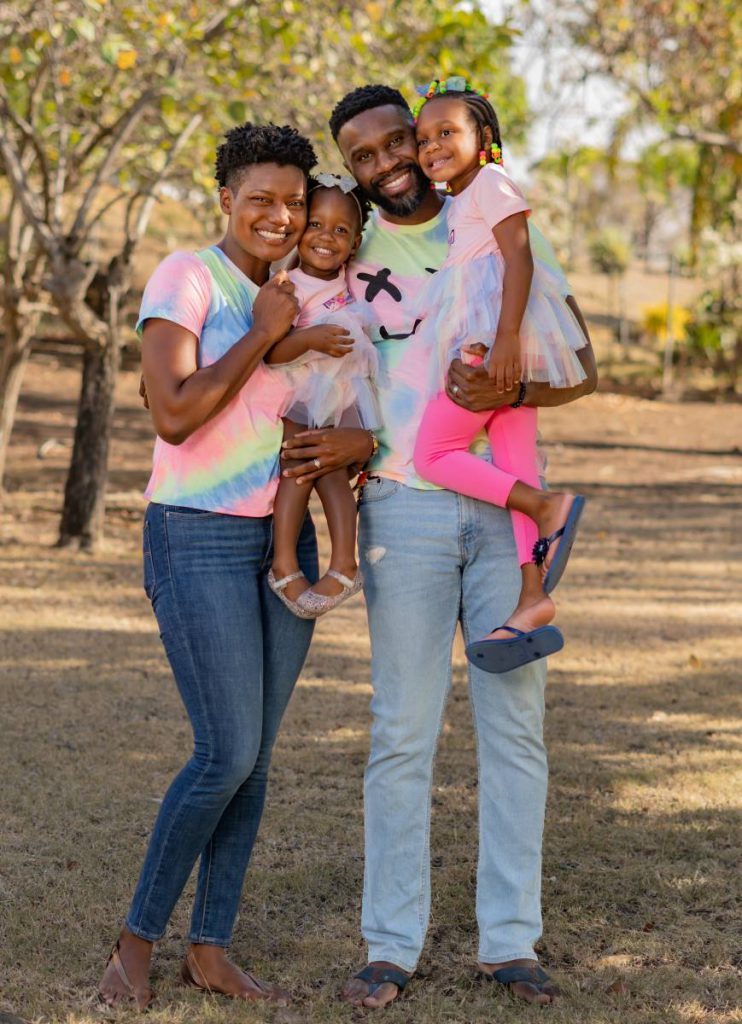Caribbean Aesthetics: Author Huanna Leon Does It Again With Sak Sa Ankò
by Lou-Ann Jordan Jun 20, 2022

There are many remarkable features of the Caribbean, but one that truly sets us apart is our language. We are a melting pot of tongues. First, we can easily be divided into English, French, Dutch and Spanish-speaking nations. However, even within Anglophone Caribbean, many other languages exist alongside Standard English. Like St. Lucia’s Kwéyòl, some of these are entirely different languages.
Undoubtedly, our Standard and creole languages are one of our most distinguishable characteristics as a region. A part of our cultural identity, it has made its way into many art forms. It appears in our music, theatre, and literature. It’s a part of our stories, and our storytellers artfully share it.
One of our storytellers is St. Lucian author Huanna Leon. Huanna’s storytelling is about the importance of Kwéyòl to St. Lucia’s culture and keeping it alive for the younger generation. She does so by educating children on the ABCs of Kwéyòl.
In 2020, the author published her first book, Sak Sa?! The activity and colouring book blended the English alphabet with Kwéyòl vocabulary. With culturally-relevant images, the activity book allows children to engage with the language, learning Kwéyòl words that they can remember easily.
Now, she’s back with her second publication, Sak Sa Ankò – The Toulé Jou. Yello had the pleasure of chatting with her about this new book and possible additions to the series. Read on to learn more.
Since your previous publication, what has been the feedback like?
The feedback has been very encouraging. Everyone loves the concept and the general idea of my books. I am super grateful that people prove this and show their support not only with words, “likes”, and “shares”, although those are deeply appreciated, but with actual book purchases.
Additionally, people have been very excited to mention that the government plans to introduce Kwéyòl in schools, and they strongly suggest that my books be on the booklist.
How much time has elapsed between the publication of the two books?
It’s been a year since my last publication. In 2021, when I published the first book, Sak Sa?! the “For de Culture” edition, I decided to put out a new book every year for my birthday. I’m a woman of my word! So, in February 2022, Sak Sa Ankò – The “Toulé Jou” edition was released. Look out for what comes next year!
What is Sak Sa Ankò – The Toulé Jou about?
Sak Sa Ankò – The “Toulé Jou” edition translates to “What’s that Again – The “Everyday” edition. The focus of this book is to teach kids the Kwéyòl vocabulary for everyday words which they would be likely to use in daily conversation. So, I have “A” for apple, “B” for ball, “C” for cat—you know, easy words like those. The goal is for kids to learn the vocabulary. Ultimately, I want them to feel comfortable and confidently use the words they’ve learned in their everyday conversations.
Since this book is targeted at older children, five to eight-year-olds, the activities are more advanced. In addition to colouring images, Kwéyòl translation, and pronunciation prompts, I’ve included a Kwéyòl sentence using the featured word as well as other Kwéyòl word activities and games throughout the book. For example, there are crossword puzzles, word searches etc.
What is the meaning and significance of the title?
A radio announcer, Ron Isidore, aka Money Ron, suggested the title to me during an interview in 2021 for the first book. He had asked jokingly, “So, what’s the next book gonna be called, “Sak Sa Ankò ?!” At the time, I had no idea what my second book would have been, far less what it would be called. However, when I was putting the book together, the name seemed perfect. The literal translation worked well as a follow up to the first title and had a little wordplay. Thanks Ronnie!
Please share about the development of Sak Sa Ankò – The Toulé Jou?
Well, the truth is my husband suggested this format for the book, and I just executed it! The thinking behind it was “just use simple words”. Behind the scenes, I had to ensure I chose words which could be easily illustrated. Next, I had to create simple sentences. Generally, I try not to overthink things in life, and the same goes for my books, so my ‘development process’ can be best described as an Action/ Execution Plan!
Is this a continuation of your first publication, and in what way are the two books linked?
Ummmm… I’m not sure if it would be accurate to describe it as a continuation. It’s related, but it’s a different book. The “Toulé Jou” edition aims to teach kids the Kwéyòl vocabulary for everyday words. In contrast, the “for de Culture” edition focused on ensuring culturally-relevant terms were taught for each letter of the alphabet.
Also, this book has an English word and the Kwéyòl equivalent for each letter of the alphabet. In the previously published book, only Kwéyòl words appeared. Overall, the objective of both books is the same; “teach the kids kwéyòl, and make it fun!”
Is it safe to call it a series, and how do you see it progressing after these two instalments?
These two books are definitely a series. I don’t know if the series will continue. It all depends on what inspiration hits next or which interviewer gives me the next great idea, lol. But the logical step is to create something for a slightly older age group, nine to preteens. In doing so, I will feel satisfied knowing that I’ve created Kwéyòl content to teach all children.

Having completed your first book, how was your writing process different for this book?
I still don’t consider myself a writer, per se, but the creative process was pretty similar to my first book. I have the idea, identify my team, and then execute! You’ll remember I mentioned that I don’t overthink, lol.
What is your dream for St. Lucia and Kwéyòl?
Hmm….At this point, I would like to see Kwéyòl introduced in the schools. There’s a lot of talk about it, and I know the process is well underway, so I’m looking forward to when it actually happens. Also, I would like to see an overall increase in our efforts to incorporate Kwéyòl and culture into our everyday lives, not just as an isolated event during Creole Heritage month. This change would mean using Kwéyòl more regularly in daily life and its positive use in our music. Another dream is to see greater acceptance and encouragement of speakers learning to speak the language. People shouldn’t be afraid to speak it for fear of making a mistake or being criticised if they make an error. My hope is for speakers to be comfortable enough to try without the fear of judgement and instead know that they will receive support and guidance for correction and improvement.
Do you get to hear from your readers? What is something memorable that’s been shared?
I’ve received lots of positive reviews from people who have purchased the books. One of my favourite comments has been from a St. Lucian living in the USA who said my book was the perfect way to “Lucianise” her son. The reality is that being abroad, her child would never have an opportunity to learn Kwéyòl. So, she was so grateful for my books to bring that cultural awareness to her children!
What is your favourite part of the publishing journey?
I can’t really identify a favourite part—each part of the process is exciting and fulfilling. The moment the idea grows into a plan, the plan becomes the first draft, and the draft becomes an edited document; I love that. There’s also when I see the cover design. Overall, each part is thrilling and tends to be my favourite at the time, lol.
What can readers look forward to next?
I can’t say yet, but I’m toying with a few ideas. But for now, my favourite is a little book of Kwéyòl proverbs or expressions. The types of phrases parents tell their children to teach a lesson, often the sentences start with, “my mother always used to say…”. Trust me, these lessons are so much more effective when said in Kwéyòl. You see, the beautiful thing about Kwéyòl is that it has so much ‘vibes’. So, even if you translate something to English, it is more impactful when expressed in Kwéyòl. As far as the phrases go, there’s no single source where they can be found. If they’re not recorded, we’re going to lose them. So, I will take on that job and do it well!
I’ve also created a line of Kwéyòl greeting cards. My first two designs were for Mother’s Day 2022, and I’m doing some more for birthdays, anniversaries, condolences etc. Greeting cards aren’t as popular as they used to be, but every bit of Kwéyòl material matters. I also have some Kwéyòl Cardettes available. These are the little cards that accompany a bouquet. So, having Kwéyòl content like this is an example of what I mean when I say I want to see the language incorporated into our everyday lives.
How can the two books be accessed in St. Lucia and regionally?
Locally, the books are available at M and C Drugstore island-wide, People’s Discount Drugs, Island Mix (in Rodney Bay), Noah’s Arkade (at the airport), Triple N, and Sea Island Cotton Shop. It can also be purchased on Amazon; search: “Sak Sa Book”.
The greeting cards are sold locally at M and C Drug Store, People’s Discount Drugs and Box Wraps and Flowers. The Cardettes are available as an option at Flowers Express, Flower Connections, Summers Flowers and Flower Shack.
I’m constantly seeking new locations and avenues for my products to be sold, so feel free to reach out to me on IG at Sak_sa758 or Facebook at SakSa or email [email protected].
*****
Huanna is a mother of two young girls, Kara (four) and Jolie (two), who are her daily inspiration to make the world a better place! Huanna enjoys fulfilling and adventurous activities with her family during her limited free time, reading about business and self-improvement, and trying fun experiments with her daughters. Check out their fun videos on YouTube.








